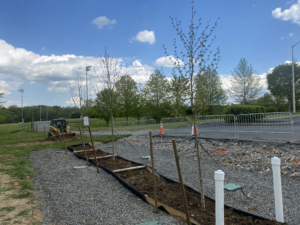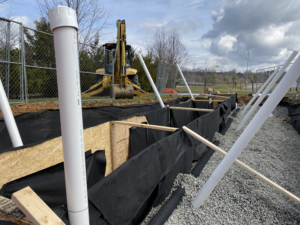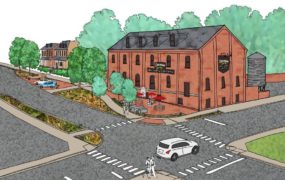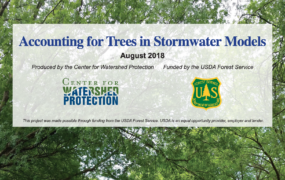My name is Jason Sprouls and I am the acting community forestry program manager for the Neighborhood Design Center. In the spring of 2020 I was awarded a Master’s in Forestry by Virginia Tech. I am excited for this opportunity to share my graduate research project that investigated growing trees in a gravel bed stormwater retention system as a novel approach to stormwater management in challenging urban sites.
Urban areas are continuing to expand nationwide, and greenspaces are being dramatically disturbed and replaced with hardscapes. Natural hydraulic regimes are thus altered significantly, which poses a significant threat to the environment and compromises public welfare and safety. These hydraulic challenges are further exacerbated by climate change. Cities and municipalities often rely on the inclusion of trees in the built environment to combat the incurred challenges affiliated with landscape development. However, trees planted in dense, urban landscapes are introduced to a myriad of challenges in their inhospitable growing environment. Consequently, urban trees suffer from diminished growth rates and shortened lifespans.

The gravel bed stormwater retention system was developed to address the combined needs of a stable hardscape, belowground stormwater storage, and tree root development to lead to large, long-lived trees that both intercept precipitation and transpire captured runoff. The design specifications of this system are intended to be low-cost, technically simple, and highly adaptable based on site configuration and intended stormwater capture.
The gravel bed stormwater retention system (GBSRS) was developed by Eric Keuhler at the US Forest Service Southern Research Station. The GBSRS was designed to use gravel to meet engineering specifications for structural integrity of paved surfaces while simultaneously providing maximized stormwater retention. In 2016, the first GBSRS was installed in Knoxville, TN and compared the growth rates between two Bald Cypress (Taxodium distichum); one grown in the system and one grown concurrently nearby outside the system. The pilot project on the Virginia Tech campus constructed the first multi-tree gravel bed stormwater retention system, which aims to evaluate the functionality and feasibility of the system. The pilot study is ongoing and will aim to evaluate the hydrological function and tree growth in the system.

The basic design of the GBSRS is that a hole is excavated next to an impervious surface that carries significant stormwater runoff for capture and storage. The GBSRS is constructed in the excavated hole with a moat of gravel surrounding the rectangular mineral soil bed. The GBSRS is predominantly gravel of high porosity, which serves the water detention, surrounding a bed of mineral soil that provides a space for root anchorage and fulfilling trees mineral nutrient needs. The system is designed this way to encourage tree roots to proliferate into the pore space of the gravel layer and occupy a large percentage of the gravel moat to maximize water cycling via the pumping action of water from roots out the foliage via the process of transpiration. Ultimately, the basic system design incorporates a small mineral bed to fulfill soil nutrients and provide tree anchorage with a surrounding gravel layer as a reservoir of water. This conceptual design can be customized for any given existing urban condition. The system can also be configured to vary the number of trees grown inside the GBSRS; a smaller installation can be customized around one or two small stature trees, while a larger system can be designed to incorporate multiple large stature trees.
Observations from both installations have shown early success; the trees grown in the GBSRS have grown decidedly larger and faster than the control trees. These BMPs show promise as a highly accessible, low-maintenance, and technically simple approach to stormwater management. My hope is that practitioners gain interest in this system and configure new installations to make urban forestry and green infrastructure more accessible and equitable.
To learn more about Jason’s research and this practice, visit the Virginia Tech website: https://vtechworks.lib.vt.edu/handle/10919/99014





